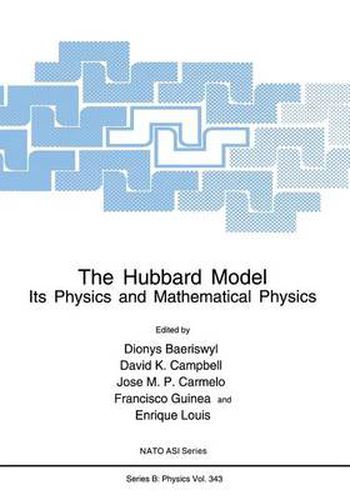Readings Newsletter
Become a Readings Member to make your shopping experience even easier.
Sign in or sign up for free!
You’re not far away from qualifying for FREE standard shipping within Australia
You’ve qualified for FREE standard shipping within Australia
The cart is loading…






This title is printed to order. This book may have been self-published. If so, we cannot guarantee the quality of the content. In the main most books will have gone through the editing process however some may not. We therefore suggest that you be aware of this before ordering this book. If in doubt check either the author or publisher’s details as we are unable to accept any returns unless they are faulty. Please contact us if you have any questions.
In the slightly more than thirty years since its formulation, the Hubbard model has become a central component of modern many-body physics. It provides a paradigm for strongly correlated, interacting electronic systems and offers insights not only into the general underlying mathematical structure of many-body systems but also into the experimental behavior of many novel electronic materials. In condensed matter physics, the Hubbard model represents the simplest theoret ical framework for describing interacting electrons in a crystal lattice. Containing only two explicit parameters - the ratio ( Ujt ) between the Coulomb repulsion and the kinetic energy of the electrons, and the filling (p) of the available electronic band - and one implicit parameter - the structure of the underlying lattice - it appears nonetheless capable of capturing behavior ranging from metallic to insulating and from magnetism to superconductivity. Introduced originally as a model of magnetism of transition met als, the Hubbard model has seen a spectacular recent renaissance in connection with possible applications to high-Tc superconductivity, for which particular emphasis has been placed on the phase diagram of the two-dimensional variant of the model. In mathematical physics, the Hubbard model has also had an essential role. The solution by Lieb and Wu of the one-dimensional Hubbard model by Bethe Ansatz provided the stimulus for a broad and continuing effort to study solvable many-body models. In higher dimensions, there have been important but isolated exact results (e. g. , N agoaka’s Theorem).
$9.00 standard shipping within Australia
FREE standard shipping within Australia for orders over $100.00
Express & International shipping calculated at checkout
This title is printed to order. This book may have been self-published. If so, we cannot guarantee the quality of the content. In the main most books will have gone through the editing process however some may not. We therefore suggest that you be aware of this before ordering this book. If in doubt check either the author or publisher’s details as we are unable to accept any returns unless they are faulty. Please contact us if you have any questions.
In the slightly more than thirty years since its formulation, the Hubbard model has become a central component of modern many-body physics. It provides a paradigm for strongly correlated, interacting electronic systems and offers insights not only into the general underlying mathematical structure of many-body systems but also into the experimental behavior of many novel electronic materials. In condensed matter physics, the Hubbard model represents the simplest theoret ical framework for describing interacting electrons in a crystal lattice. Containing only two explicit parameters - the ratio ( Ujt ) between the Coulomb repulsion and the kinetic energy of the electrons, and the filling (p) of the available electronic band - and one implicit parameter - the structure of the underlying lattice - it appears nonetheless capable of capturing behavior ranging from metallic to insulating and from magnetism to superconductivity. Introduced originally as a model of magnetism of transition met als, the Hubbard model has seen a spectacular recent renaissance in connection with possible applications to high-Tc superconductivity, for which particular emphasis has been placed on the phase diagram of the two-dimensional variant of the model. In mathematical physics, the Hubbard model has also had an essential role. The solution by Lieb and Wu of the one-dimensional Hubbard model by Bethe Ansatz provided the stimulus for a broad and continuing effort to study solvable many-body models. In higher dimensions, there have been important but isolated exact results (e. g. , N agoaka’s Theorem).